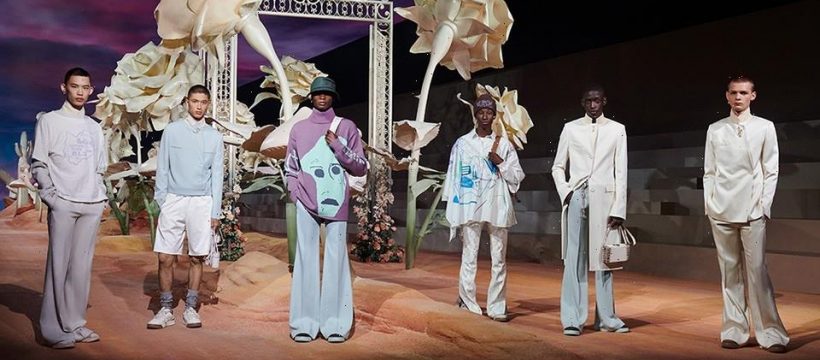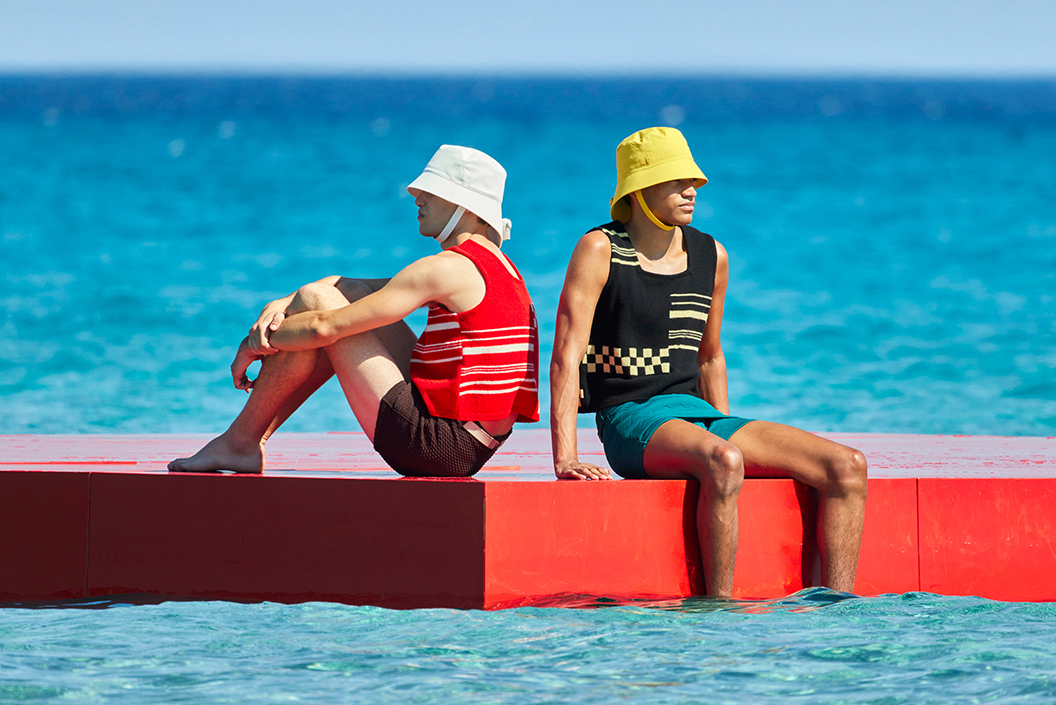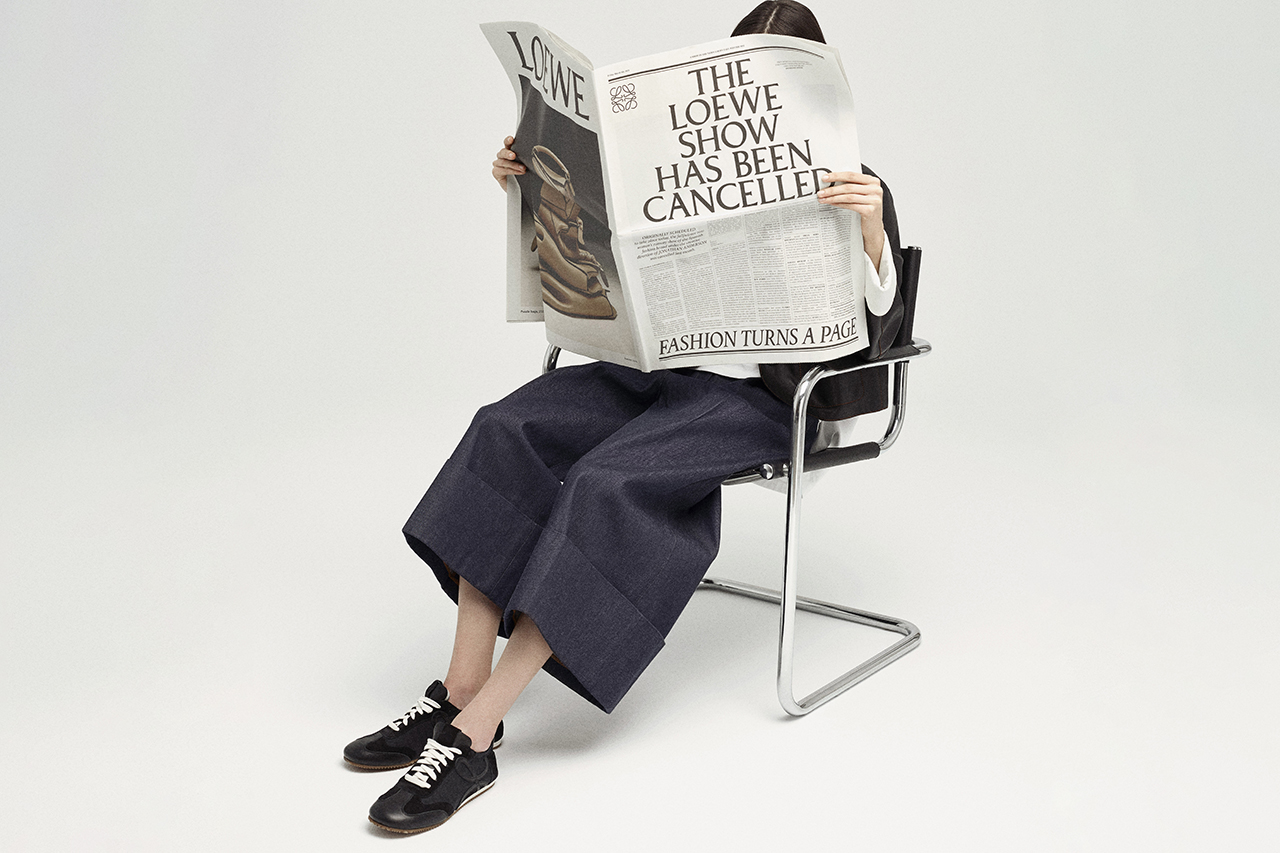It’s been more than 15 months since London and Paris Men’s Fashion Weeks were first cancelled due to COVID-19 and resulting lockdown measures. Since then, we’ve sat through a series of digital fashion shows, as landmark events — from Raf’s first Prada show to Louis Vuitton’s collaboration with Nike — emerged through a screen.
Nowadays, however, shows are beginning to return: London Fashion Week featured some socially-distanced shows, while Kim Jones presented Dior’s collection with Travis Scott in front of a live audience. As the world’s fashion capitals start to open up, and major events tentatively return, we caught up with three experts to discuss the future of the fashion week, and whether the virtual format is likely to survive.
“There is a longing for physical shows which is widespread and understandable. The digital show is way too cold.”
HYPEBEAST: Looking back on three seasons of primarily digital shows, do you think they will continue as things open up?
Joe Brunner, menswear buyer at Browns: I think it will, especially for new gen brands, as it has given them a seat at the table, allowing them to be part of the conversation regardless of whether they’ve secured financial backing. It’s provided a platform for talent on all levels and supporting those who need it whether or not they ask for it.
Angelo Flaccavento, critic: I think that when things will open up we will see more physical than digital shows. But some designers will definitely stick to the formula because it’s very handy. There is a longing for physical shows which is widespread and understandable. The digital show is way too cold.
Damien Paul, head of menswear at Matchesfashion: I think we are going to see a blended format moving forward. Some brands are clearly eager to present physical shows, but there will be a forward thinking approach to shows as brands continue to evolve with designers pushing their creative boundaries and thinking of alternative ways to show their collections and the experiences they create.
Prada
Are there any digital presentations over that time that really stand-out to you as innovative?
Brunner: Sunnei’s version of the fashion Sims, as it was fun, and also quite comical in the way the avatars move. I also thought Balenciaga’s FW21 AfterWorld was fantastic. It’s certainly not the first time anyone’s used video-game-style graphics, although it was definitely the most immersive, as you could play the game on their website. Richard Quinn’s most recent video was insane: the production alone was out of this world, as he essentially made a feature length film. The cinematography of Prada’s last two digital shows were definitely some of the best shoots I’ve seen in some time and seeing the institution that is Miuccia Prada sit down to answer questions was a rare and magnificent site. Lastly, I’d recommend anyone who hasn’t tuned into last year’s Helsinki Fashion Week to have a gander, as they’ve bridged a gap between designers and tech firms.
Flaccavento: I think that the digital show is way more effective than the fashion film. Zegna has created their own distinctive language which is a merging of show and film that I find extremely original. Other very effective digital shows have been those from Prada because of the sharpness and the definition and the ability to show the details of the clothing.
Paul: Marnifesto! The ongoing collaboration between Marni and a community of creatives really shows the power of digital evolution. It actually is amazing that it created a whole new way of working for the brand. Also, Prada AW21. It was the debut from Raf Simons as Co-Creative Director and the Rem Koolhaas-designed show space was like stepping into the invitation – it was a visual feast! The post show Q&A was also a fantastic way of making the usually exclusive moment to editors available to everyone.
“If the last year has taught us anything, it’s that we should have fun and actually put on a show.”
Is there anything that you think more traditional, physical shows can learn from these presentations?
Brunner: To change the format of the standard catwalk when we attend shows as they’re allotted an hour time slot, but finish in 10-20 minutes. If the last year has taught us anything, it’s that we should have fun and actually put on a show, budget permitting, as I think catwalks have lost the performative element they used to have.
Flaccavento: The best thing about digital fashion is that you can really see the details up close, which is something that we all long for. There is little else that we can learn from video to show.
Paul: When a designer creates an immersive digital experience that is available to all, it opens the world of shows up to a much wider, more inclusive audience, rather than solely the industry insiders present at the physical shows.
Fumiko Imano/Loewe
What was lacking with digital shows? Do you think physical shows will fill that void?
Brunner: There’s an added pressure to ensure the content is engaging and a few of the digital experiences fell flat, from the video content to the collections. It can be difficult to bring clothes to life through a lens, however with online shopping it’s how a large number of customers purchase their clothing, without physically seeing them first. From a practical aspect, nothing will beat physical shows where you can see clothing worn in person, how it hangs, how it moves and its proportions, some of which is challenging to gauge on a video.
Flaccavento: What was lacking in these digital shows was a sense of life and seeing things on a real scale. We mostly saw them on computers or smartphones, with images that are so little. We also missed the real movement of clothes on a body seen for real in a room.
Paul: I think there is an intangible atmosphere that you don’t quite experience with digital shows. You can’t ensure you have allocated enough time to take it all in when viewing digitally, whereas when you’re attending a show physically the whole day is booked out solely for the occasion. Being able to enjoy the experience as a team and debrief together following the show is certainly missed when viewing virtual presentations too.
“When a designer creates an immersive digital experience that is available to all, it opens the world of shows up to a much wider, more inclusive audience.”
In the post-pandemic world, what do you think is the future of the fashion show?
Brunner: I certainly believe there’ll be a mixture of digital and physical, which I think we should embrace and continue to push forward. Personally, I’d like to see shows become more performance driven. I appreciate that it isn’t for everyone, but can you imagine how incredible it would have been seeing Richard Quinn’s most recent show in person?
Flaccavento: I think the fashion show remains a prime means to present fashion. I have no crystal ball to predict its future but I think it will stay relevant.
Paul: I think there will be lessons learned from both physical and digital shows, resulting in a refined experience focusing heavily on the physical whilst being expertly supported by a digital format.
Source: Read Full Article


